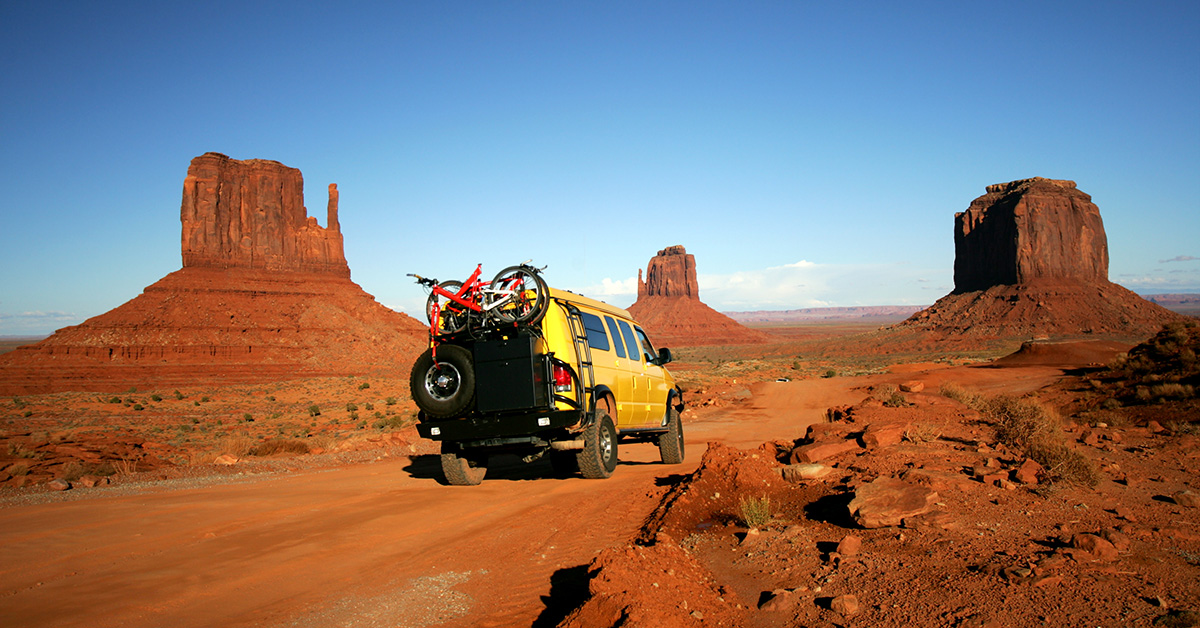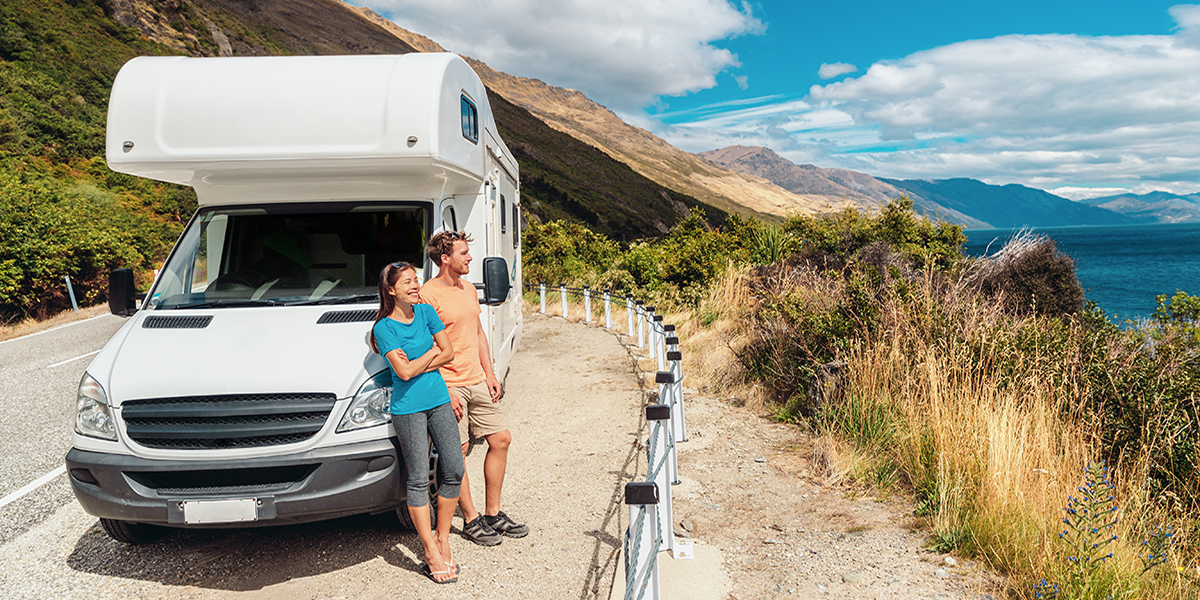With the rise of social media influencers on Instagram and TikTok who are buying vans and camping coast-to-coast, posting as they go, interest in adventure vans is growing too. More people are looking for ways to get off the beaten track, away from the close-quarters of campgrounds and into wide-open spaces. Adventure vans help make that a reality. But what do you need to know about adventure vans?
What is an Adventure Van?
An adventure van is an all-wheel-drive (AWD) camper van created for people whose focus is on the journey as much as, or more than, the destination. These units are designed for reaching out-of-the-way places, traversing terrain that regular RVs balk at. Keep in mind that not all campervans are adventure vans. Today, RV Trader takes a look at what you need to know about this popular and growing segment of #vanlife.
Class B RVs and Adventure Vans are Not Exactly the Same
Class B RVs and adventure vans are often confused as the same thing, with the terms sometimes used interchangeably. Beyond outward appearance, the uses for the two are usually quite different. Luxury Class B RV owners often stay on-road and in campgrounds. Adventure vans are geared toward overlanding—a blend of camping and off-roading—and seeking out secluded spaces.
Adventure Vans are made to be rugged, and their appearance matches. There aren’t a lot of luxury appointments in these off-road-ready RVs. Their simple styling and easy-clean surfaces reduce the worry of tracking in muddy gear or footwear. The interior is often modular, so you can adjust the space as needed. Typically, the toilet is cassette or composting, and the shower is collapsible. The kitchenette may be tiny and have a portable stove for indoor or outdoor use. Some adventure vans have a garage space to store items like mountain bikes, with a bed that folds down over the top. The tires are larger and have a deeper tread. They are often built on a Sprinter, Ford E350 and Transit, or Dodge Pro Master platform and have greater ground clearance than a typical class B motorhome. Overall, a big perk of adventure vans is that they are highly customizable (which makes for some highly trending social media content!).
Luxury Class B RVs have a more refined look and feel and are commonly front-wheel-drive (FWD), although AWD models are available from some manufacturers. The interior tends to be more luxurious, and may include features like ultra-leather seating, hardwood cabinets, a more elaborate kitchenette, an HD TV, a fixed bathroom, an automatic sliding door, and mood lighting. Usually ready-made, these popular RVs are produced by RV manufacturers like Thor Motor Coach, Coachmen, and Airstream, and often have less room for gear. They typically have a fixed layout.
You Can Buy A Ready-Made Adventure Van, or Do It Yourself
There are a variety of ways to create an adventure van. You can do it yourself, use a conversion kit, have your van custom-made by an outfitter, or buy a ready-made unit from a dealer or private seller.
Complete customization is one thing that draws adventure-seekers to these RVs, especially those who like to post on social media about the conversion process. Conversion kits and DIY plans are widely available online. Popular custom outfitters include Wanderful Wheels, Esplori, Colorado Campervan, Catapult AV and ACME Overland.
Are you looking for a unit that’s already made? Some RV manufacturers are also getting on board, with models like the Winnebago Revel 4×4, Storyteller Overland MODE 4×4, Pleasure-Way Rekon 4×4, and Roadtrek Zion aimed at a more adventurous audience.
Look For a Van That is Ready for YOUR Adventure
If you’re buying a pre-made unit from a dealer or private seller, their idea of an adventure van might be different from yours. Choose one that will fit your lifestyle. Here are some points to consider:
- Look for an AWD van with upgraded wheels and tires so you can explore more than pavement.
- Going off-road usually means going off-grid as well. Your van should be equipped for prolonged stays outside the campground environment. Look for one with an ample solar system so you still have power while you’re enjoying the wilderness. These boondocking basics will help you prepare for dry camping.
- A high-quality interior is a must. A well-constructed interior is more comfortable and is better able to withstand jaunts over rougher terrain.
- A modular design helps maximize your van’s usage. Having the flexibility to adjust the layout may serve your needs better than a fixed layout.
- Make sure it has ample storage for your gear, inside and out. A well-made adventure van will have plenty of space for food, clothing, and other necessities, plus roof racks and ladders for easy access to your outdoor items.
- Look for standards like an awning, bug screen, on-board air compressor, roof vent, fridge, stove (often portable), and sink.
Adventure vans can go anywhere a regular van can—and beyond. No special storage is required; they typically fit in your driveway and often fit in the garage as well. They’re a great grab-and-go RV for folks who are always looking for their next adventure. Throw your gear in and you’re on your way! Drive-thrus are no problem, and if you’re tired of the road, moochdocking with friends and family is easy.
Not all campervans are created equal, so make sure you find the one that fits your #vanlife journey. If you’re looking for an AWD RV companion for your next journey, check out the nationwide inventory of new and used RVs at RVTrader.com
By Janelle Baldwin

